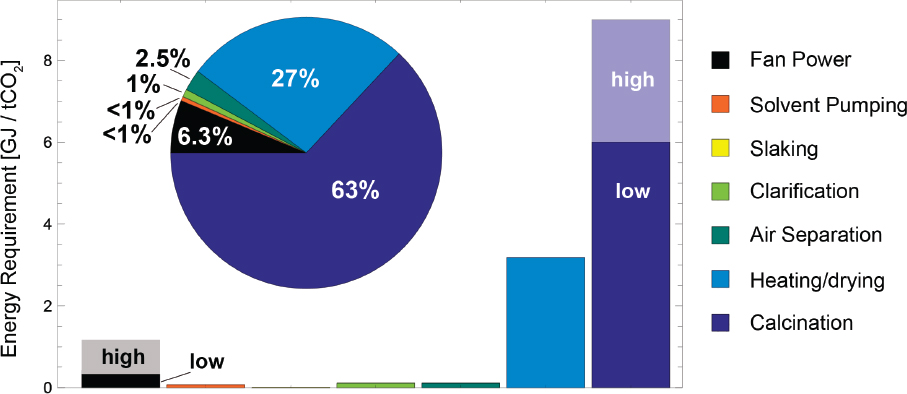Emissions of key air pollutants targeted for reductions in EU Member States continue to drop, slower progress for ammonia – European Environment Agency

Report on Emissions of Key Air Pollutants in the EU: Progress and Challenges Towards Sustainable Development Goals
Introduction
According to the latest data assessment published by the European Environment Agency (EEA) on 27 June 2025, key air pollutant emissions targeted for reductions and monitored under EU legislation have continued to decline across most EU Member States. However, reducing ammonia emissions remains a significant challenge. This report emphasizes the alignment of these findings with the United Nations Sustainable Development Goals (SDGs), particularly SDG 3 (Good Health and Well-being), SDG 11 (Sustainable Cities and Communities), and SDG 13 (Climate Action).
Compliance with National Emission Reduction Commitments
In 2023, nineteen EU Member States met their respective 2020-2029 national emission reduction commitments under the EU’s National Emission Reduction Commitments Directive (NECD) for the five main air pollutants:
- Nitrogen oxides (NOx)
- Non-methane volatile organic compounds (NMVOCs)
- Ammonia (NH3)
- Sulphur dioxide (SO2)
- Fine particulate matter (PM2.5)
Eight Member States failed to meet their commitments for at least one pollutant, with ammonia emissions—primarily from agriculture—being the most common challenge.
Other Key Findings
- Ammonia Emissions: Despite progress compared to 2022, six Member States still need to reduce ammonia emissions further to meet their 2020-2029 commitments. This highlights the ongoing challenge in addressing agricultural emissions, which impacts SDG 2 (Zero Hunger) and SDG 15 (Life on Land).
- Sulphur Dioxide Reductions: The most significant progress has been made in reducing sulphur dioxide emissions, with 25 Member States already meeting their 2030 reduction commitments. This contributes to improved air quality and ecosystem health.
- Future Challenges: Many Member States face significant challenges in achieving the more stringent emission reduction commitments set for 2030 and beyond, necessitating enhanced policy measures and innovation aligned with SDG 13 (Climate Action).
Reporting Under UNECE Air Convention
The EEA also published the annual European Union emission inventory report for 1990-2023 under the Convention on Long-range Transboundary Air Pollution (UNECE Air Convention). This report covers the five main air pollutants as well as additional pollutants such as heavy metals, black carbon, and persistent organic pollutants.
Key observations include:
- Emissions of the five main pollutants in 2023 were lower than in 2005, confirming a continued downward trend in EU emissions.
- Sulphur dioxide emissions have experienced the largest reductions, followed by nitrogen oxides.
- Ammonia emissions have decreased less compared to other pollutants, indicating the need for targeted interventions.
The report assesses progress towards achieving emission reduction commitments under the Gothenburg Protocol to the UNECE Air Convention, supporting SDG 3 (Good Health and Well-being) and SDG 13 (Climate Action).
Background and Policy Context
Under the National Emission Reduction Commitments Directive (NECD), EU Member States are legally required to meet national commitments to reduce emissions of the five main air pollutants to protect human health and the environment. These pollutants have significant negative impacts, which is why they are included within the scope of both the NECD and the international Gothenburg Protocol to the UNECE Air Convention.
The EEA’s analysis is based on the latest 2023 emission inventory data reported by Member States in 2025 under both the NECD and UNECE Air Convention frameworks.
The European Commission is conducting an evaluation of the NECD, expected to be completed by the end of 2025, to assess the Directive’s effectiveness in protecting human health and the environment, further supporting the achievement of SDG 3 and SDG 13.
Conclusion
The continued reduction in key air pollutant emissions across most EU Member States demonstrates progress towards cleaner air and healthier environments, directly contributing to multiple Sustainable Development Goals. However, the persistent challenge of reducing ammonia emissions, primarily from agriculture, requires intensified efforts and innovative solutions to meet future commitments and ensure sustainable development.
1. Sustainable Development Goals (SDGs) Addressed or Connected
- SDG 3: Good Health and Well-being
- The article discusses air pollutants that have significant negative impacts on human health, highlighting the importance of clean air for health protection.
- SDG 11: Sustainable Cities and Communities
- Reducing air pollution contributes to making cities and human settlements inclusive, safe, resilient, and sustainable.
- SDG 13: Climate Action
- Although not explicitly mentioned, reducing emissions of air pollutants such as black carbon and volatile organic compounds also supports climate action.
- SDG 15: Life on Land
- Reducing ammonia emissions, which predominantly come from agriculture, helps protect terrestrial ecosystems from eutrophication and acidification.
2. Specific Targets Under Those SDGs Identified
- SDG 3 – Target 3.9: By 2030, substantially reduce the number of deaths and illnesses from hazardous chemicals and air, water, and soil pollution and contamination.
- SDG 11 – Target 11.6: By 2030, reduce the adverse per capita environmental impact of cities, including air quality.
- SDG 13 – Target 13.2: Integrate climate change measures into national policies, strategies, and planning (implied through emission reductions).
- SDG 15 – Target 15.3: By 2030, combat desertification, restore degraded land and soil, including land affected by desertification, drought, and floods, and strive to achieve a land degradation-neutral world (linked to reducing ammonia emissions from agriculture).
3. Indicators Mentioned or Implied to Measure Progress
- National Emission Reduction Commitments (NECD) Compliance:
- Number of EU Member States meeting their national emission reduction commitments for the five main air pollutants (nitrogen oxides, non-methane volatile organic compounds, ammonia, sulphur dioxide, and fine particulate matter).
- Emission Levels of Key Pollutants:
- Quantitative measurements of emissions of sulphur dioxide, nitrogen oxides, ammonia, non-methane volatile organic compounds, fine particulate matter, heavy metals, black carbon, and persistent organic pollutants.
- Progress Towards Gothenburg Protocol Commitments:
- Assessment of progress in reducing air pollutant emissions under the UNECE Air Convention’s Gothenburg Protocol.
- Reduction Trends Over Time:
- Comparison of emission levels in 2023 with baseline years such as 1990 and 2005 to track downward trends.
4. Table of SDGs, Targets, and Indicators
| SDGs | Targets | Indicators |
|---|---|---|
| SDG 3: Good Health and Well-being | Target 3.9: Reduce deaths and illnesses from air pollution and hazardous chemicals by 2030. |
|
| SDG 11: Sustainable Cities and Communities | Target 11.6: Reduce adverse environmental impact of cities, including air quality, by 2030. |
|
| SDG 13: Climate Action | Target 13.2: Integrate climate change measures into policies and planning. |
|
| SDG 15: Life on Land | Target 15.3: Combat land degradation and restore ecosystems by 2030. |
|
Source: eea.europa.eu

What is Your Reaction?
 Like
0
Like
0
 Dislike
0
Dislike
0
 Love
0
Love
0
 Funny
0
Funny
0
 Angry
0
Angry
0
 Sad
0
Sad
0
 Wow
0
Wow
0
















































































